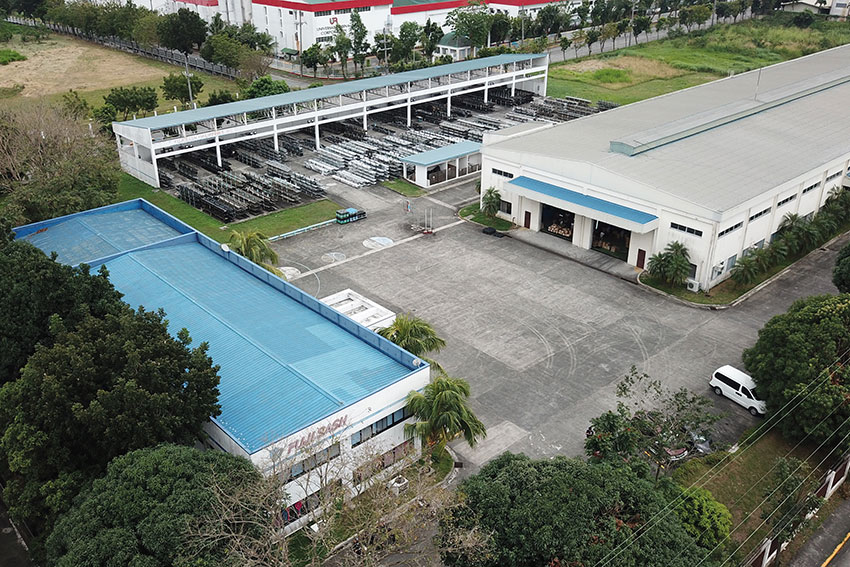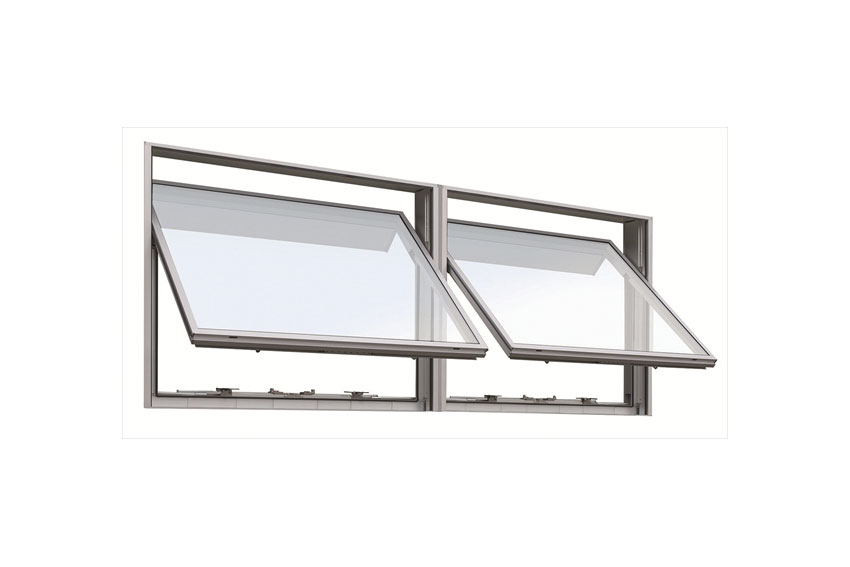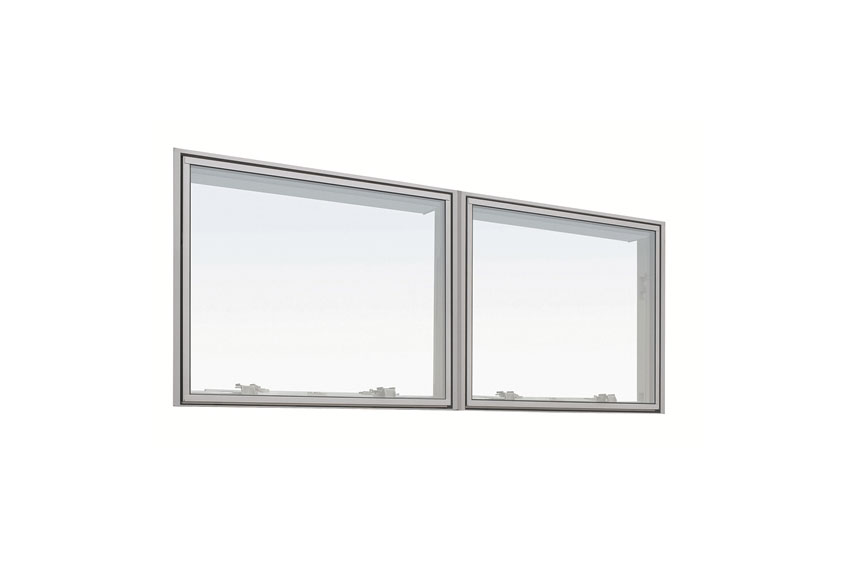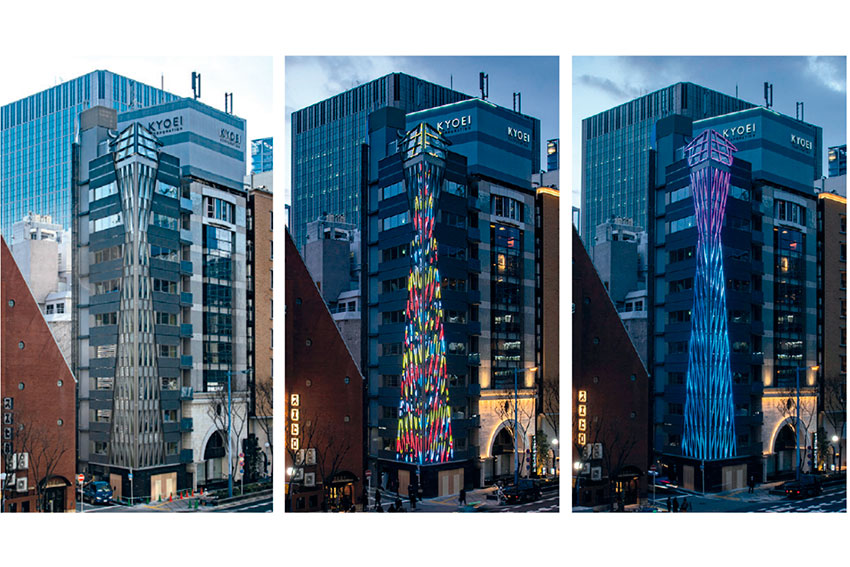[ad_1]
Today, Japanese companies are competing in a globalized world where QCD is really important: quality, cost and delivery. At the same time, Japanese companies are still chosen for high mix, low volume production runs and your company is a fantastic example of that, for example, your project at Kuala Lumpur International Airport. Why do you think Japanese firms are still being chosen? What is the advantage of Japanese manufacturing over regional competitors?
First of all, allow me to share with you our company’s perspective on monozukuri. The type of manufacturing model that our business is based on is order-based manufacturing, so we don’t create anything that is standardized, but we cater our technologies and our manufacturing processes to produce what is needed for our clients, so it’s all order-based. In that sense, what we can say is that we’re always thinking about what the main specifications and requirements of our clients are. That’s the foundation of our business.
It’s widely publicized that Japan has the oldest population in the world, almost 30% over 65. Now if we look at the construction industry, one in three workers is also over 65. Nikkei recently published an article in which they said Japan needs to have 6.75 million foreign workers to come to Japan by 2040 in order to sustain economic growth. As a company very closely aligned with the construction industry, what is your take on these population challenges? How are you overcoming these challenges that are associated with the aging population?
Well, it’s definitely a large issue, especially when it comes to being able to have a solid supply of technicians. There’s a shortage of technicians, and how to deal with that is a big challenge for us. One way in which we’re dealing with it is by working with technical students abroad, for example in The Philippines. We have engineers there that we are fostering through the technical design center that we have there. When it comes to design, the blueprints are done online because it’s all CAD-based. We have about 40 people there who are training at the design center. They’re very capable individuals, so they’re always there and we work together and they create the basic blueprints and data, which they then send here to Japan. We then implement it in our business here.
That’s what’s happening in The Philippines. Apart from that, we also have a technical study agreement in Cambodia, whereby Cambodian engineering students come to Japan through a contract sponsored by a government technical study allocation that we have. They come here to study and they mainly work on installation operations. Then after five years when they’ve been able to pick up the various technical and engineering skills required, they return to Cambodia. We have a kind of positive cycle going on.
Those that have studied and worked at our technical center in The Philippines are extremely talented. We have a number of them also come and visit Japan and work here through this kind of exchange. Another way in which we’re responding to this crisis is by allowing those extremely distinguished engineers who are coming to retirement age to extend their contracts so they may continue to work with us.
Also, we’re in the middle of automating more and more of our processes and advancing automation through implementing robotics. We’re implementing that kind of machinery in order to increase efficiency and productivity where required and where it’s possible. We’re in the middle of that process but it is a very challenging issue no matter what.
Climate change is a hot topic for every manufacturer in the world now, and your window sashes are a very critical component to ensure a hermetic seal around the window so that the temperature indoors can remain stable. What products would you highlight for their ability to be environmentally friendly and energy saving for your clients?
One of our flagship products when it comes to environmental considerations is our Winbreath window sash. Without electricity or power in order to support ventilation, it moves in accordance with natural wind power, so just using the natural pressure of that, it opens and closes when required.
I think the motivation behind Winbreath was the idea that there could be windows that don’t require power to be opened, and that could support good ventilation, especially in Japan with the difference in the four seasons.
In spring and autumn there is relatively good weather, so mild that you actually don’t even need glass on the window and you can have natural ventilation. That’s why we developed this product that lends itself to that kind of situation. The idea is that when the weather is nice outside, it would be nice if our windows didn’t have glass.
The US Department of the Environment estimated that consumers could save 27% of their electricity bill if they could have better insulation. Insulation is a key characteristic of windows, and windows can either retain or release heat from the building. What is the role of window sashes in allowing for superior insulation?
Actually, we are catering more to high-rise buildings rather than individual homes and private housing. These buildings have really high standards, and we need to meet really high specifications in terms of environmental regulations, energy consumption savings and so on.
Aluminum is certainly good for insulation, but what’s even better are plastic resin-based materials, so what we’ve been doing is creating a combination of aluminum with resin by fusing them together to create a material that is very high performance when it comes to insulation. We’ve actually been rolling out this aluminum resin infusion-based product for Sekisui House.
Architects today are combining a lot of materials in their drawings. Wood, stone and aluminum are used to accentuate differences in building designs, and as you move from one space to another the material changes. You’ve developed a product called Janus Wall which has aluminum on the outside, wood composite on the inside and a filling of polyethylene that ensures insulation. How do you adapt to the architects’ demands for these material marriages?
Actually, not all of our products are like the Janus Wall. Not all of the things that we provide are able to necessarily meet all of the high demands of the architects. However, we do rely on a number of coating mechanisms, where we provide coating paint so that the material looks more like wood, stone or brick. We also have certain sorts of seals that you can place using adhesive coated material on the walls.
The demands of architects are constantly changing. They’re quite demanding, choosy and picky because they’re always changing their mind about things. By the time you create something, perhaps the time for it has already passed and they’re on to something else.
We work together with certain companies that have those special techniques when it comes to coating and providing such surface coverings, treatments and technologies. We contract that kind of work to them in order to provide what we can to the clients. We believe that when doing such treatments, it’s important for us to utilize our technology when it comes to ensuring durability and the long life-cycle of the product, so the adhesive must be of good quality.
You have a subsidiary called Fuji Light Metal, which takes care of aluminum businesses, and we also know that you produce functional alloys. These products are utilized in a variety of industries including semiconductor equipment for example. How did your products evolve from window sashes to aluminum and metal products, and what are some of the synergies that you’re able to create within your group?
Let me just share, first of all, that we are pioneers when it comes to producing aluminum-based sashes in the industry. When you use aluminum rather than steel, you require huge machines that work using mold injection in order to push out the product as opposed to steel, which is more malleable.
In order to cater to that, we require huge capital investments into such machinery. In order to ensure profitability, it was important for us to create a stable flow in the business, and it wouldn’t be something that could be sustainable if we were limited to only utilizing this large-scale machinery to produce only the building’s window sashes.
We therefore looked for ways in which we could diversify our product portfolio and usage of the machines. I think it’s the same for YKK as well. What they’ve been doing is increasing the use of resin-based window sashes, so they’re slowly replacing aluminum and increasing their exterior material and looking to see how they can expand in that way.
We’re seeing a trend in the construction industry towards modular houses. Modular house building involves a much faster and cheaper method to build a house, using predefined connection points for ceilings, walls, windows and doors, which are all done off site so that they can quickly be assembled on site. In Japan, Daiwa House is one of the specialists in that field. How are you adapting your technologies for this modular house building trend that we see in the construction industry?
Well, when it comes to adopting this modular based approach, it’s actually all about how we respond to the needs of our clients. If they require it, then we will provide it, but we’re working with mostly buildings so it’s not necessarily as massive as Sekisui House in terms of needing that module-based type of business.
However, we are doing a lot of refurbishing and renovation, which is often required in those situations. We provide options concerning the improvement of heat insulation, and in order to improve the performance of windows, we keep the frame, but we have them able to change the type of glass in order to improve performance when it comes to insulation. Sometimes we use double layered windows, specialized glass and things like that.
We don’t foresee that that particular business is necessarily going to grow anytime soon, and it’s not a market that has high growth potential so we’re really looking to continue maintaining it through government subsidies. We really need government support for the industry as a whole, not just as a single company. It’s through this that we are able to procure that kind of support.
Your company has done a variety of major projects. For example, in 1964 you helped make the windows of Japan’s very first skyscraper, the hotel New Otani, and you were also involved in some major projects like Grand Front Osaka and Kuala Lumpur’s new international airport. Out of all these projects, is there one that is dear to your heart and that you would like to highlight in particular?
Although I wasn’t working here at the company at the time, it was a golden milestone for the company and I had, of course, known that Fujisash had supported the curtain wall construction for the New Otani hotel.
They underwent renovation some 10 years ago and at that time we were also able to support the renovation. I think it’s quite rare in Japan, or even abroad, to have that large scale of a renewal project when it comes to updating curtain walls.
You also have an LED business where you provide different lighting arrangements. How does the combination between LED’s, window sashes and curtain walls work?
The starting point for our LED business was actually working together with an LED company to utilize an LED light that was very, very thin. We were looking to see how we could expand its applications.
Alair was the beginning of our introduction or expansion into the LCD business. We thought, “OK, what would happen if we were to install this thin LED product into the window sashes?” We thought it would be very interesting to see how it would look if we were to introduce these thin LED chips into the window sashes. It would light up the surrounding wall like a billboard. I think the kind of light fixtures you see today will slowly be phased out as the years progress. I believe that in future, lighting will be installed and integrated in such a way that it wouldn’t be obvious that there was a light in the room. We thought maybe that we could replicate the way billboards work, but in interior settings. The interior designers that we broached this subject with thought this was very interesting, and we started to create lighting that doesn’t feel like lighting.
Actually, the world of architecture in Japan is very interesting in that there’s division and separation of different aspects of the business. For example, when it comes to things like the installation of wires, pipes and lighting, each one is done by a different company. Despite that kind of division that is the industry standard, we are able to provide the lighting as well as the walls. In that way, I believe that what we’re doing is quite a new, pioneering type of initiative within the industry. It’s a new style, a new model of business.
You launched your mid-term strategy this year, and it’s running all the way to 2024. Could you highlight some of the key targets that you’ve set in your plan?
Our midterm strategy is based on the 3 pillars of how to increase profit, how to work more speedily, and how to be even more environmentally friendly. With regards to our business portfolio, we’re really looking to identify where we need to strengthen and where we need to increase the efficiency and optimization of the business.
An example of that is that within our group we have a business that is working in the transportation of products. By utilizing warehouses, we have the inventory shipped out and delivered to our clients in accordance with their needs. We’re looking to see how we can optimize our transportation company so that it becomes more of a general logistics company that is able to improve its performance and operations in this way.
We’re also looking to see how we can make the delivery process even more environmentally friendly by not utilizing trucks only for land transport, but also using trains for long distances, and how a combination of trucks and trains might work in order to reduce gas consumption and make those tiny tweaks in order to move in the direction of carbon neutrality. These things are also included in our mid-term strategy.
Since 1957 you’ve partnered up with Fenton Industries, an American company, and of course Ebara in 1992 to create some thermal decomposition machinery. How are you partnering up nowadays and what role does co-creation play in your business operations?
I truly believe that partnerships will become even more crucial in order to expand and be able to provide the type of products and services that our company may not be strong in, or that we might be lacking. Working together with other companies in order to meet such shortfalls is going to be more and more important. I believe that there is a limit to how much wisdom and know-how one company can accumulate on its own.
I’m actually someone who loves partnering with others and I love meeting people and expanding my horizons in that way with different companies, and I believe that it’s important to keep doing so. What’s important when working on partnerships and partnering with others is really ensuring that you can trust the partner and that you have a discerning eye and good judgment to be able to see through the individual or the company.
You first expanded into Malaysia in 1990. In 1994 you opened up an operation in The Philippines and you’ve since done a joint venture in Taiwan and most recently, you opened up an operation in Vietnam in 2017. Moving forward, could you tell us a little bit more about your future international expansion strategy and which particular markets you’re going to be prioritizing?
With regards to our overseas business, that was the area that was hit the hardest as a result of the covid 19 pandemic. Right now, we’re actually at a point in our company where we really need to launch ourselves once again to see how we can reactivate our overseas business and take back what we have lost. We want to develop and grow overseas despite the damage that was done by the pandemic.
I believe that what’s important for the growth of our overseas business is to ensure that our operations in The Philippines, Taiwan and Vietnam for example, are really able to succeed with the local staff as the protagonists, really rolling out the business independently, and in a very robust way, based on the needs and the working style of that country.
Currently, our overseas bases are working independently of one another. However, moving forward, it would be very interesting to see how they could work in a more horizontal way, with the flow of resources – importing and exporting – working together in a more integrated fashion.
In terms of geographic locations, we’re looking to continue to strengthen our presence in the Southeast Asian region since there are a lot of Japanese corporations present there. It’s an area that has the greatest potential and ease when it comes to expanding and strengthening our business.
What we’re really looking to do is increase the strength and performance of our sales offices abroad. We don’t have any plans to build large factories or anything like that, but we’re putting our focus on ensuring that the local company offices are able to work to their highest capacity, not needing to rely on any support from Japan per se, but able to run everything locally.
For example, we have a factory in The Philippines which manufactures various products. We’re looking to have the Philippines plant manufacture curtain walls that can then be supplied to Taiwan, where there is high demand for these curtain walls in high-rise buildings, so creating that integration and collaboration between the different overseas points will be the next step in our strategy.
Currently, our largest plant manufacturing curtain walls outside of Japan is operated with a partnership that we have with a Chinese company called Endai, and we’re looking to see how we can expand our supply chain by increasing the functionality of the factory in The Philippines. We’re now in a trial phase to see if the Philippines plant can do that. In this world of unpredictability and climate turbulence, it’s important to expand our supply chain so that we’re not reliant on a single source. This is one of the ways in which we’re responding and enhancing our risk management.
Let’s say we come back to interview you again on the last day of your presidency. What would you like to tell us about your goals and dreams for the company by that time, and what would you like to have achieved by then?
There are so many things, I don’t know where to start. I don’t even know when my last day will be. I’ll do this till I die. Seriously though, it’s a wonderful and important question. I think I’ll need a few days to respond. I can’t respond in any way that I would feel satisfied with right now.
[ad_2]
Source link




